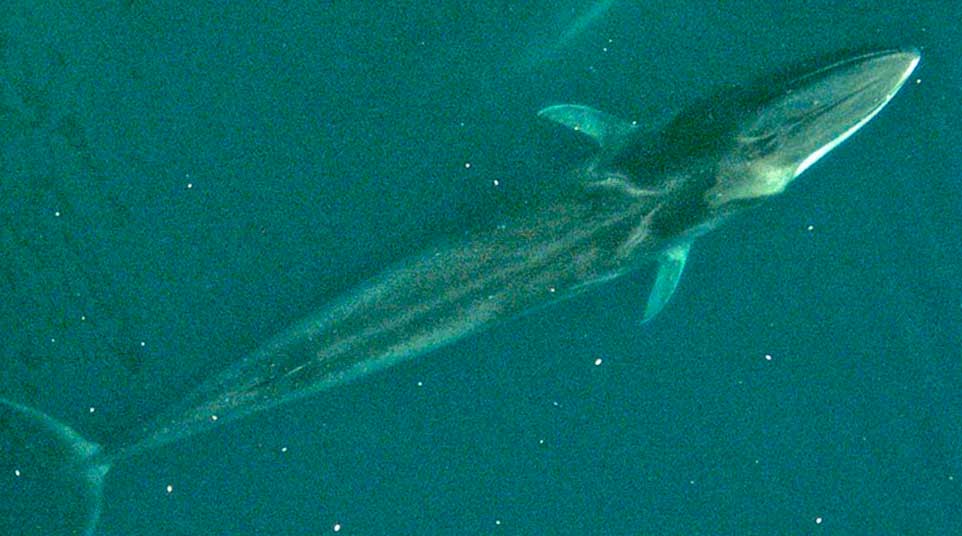- Home >
- Travel Guide >
- Galapagos Islands >
- Animals & Wildlife >
- Galapagos Fin Whale
Name: Galapagos Fin Whale
Family: Baleanopteridae
Scientific Name: Balaenoptera physalus
Length: Males 82 feet (25 m) Females 85 feet (26 m)
Weight: 80,000 and 160,000 lbs (40 and 80 tons)
Adult Length: 18-26 m (59 - 85 ft)
Blow: Tall column, thicker and higher than Sei and Bryde's Whales but smaller than Blue Whale
Breaching: Variable angles, huge splash
Deep dive: Tail flukes not raised
Group size: 1 - 2 , sometimes more when feeding
Category: Rorqual Whales
All 6 of the world's species or Rorqual whales have been recorded in Galapagos. The rorqual whales are large to very large, and include the biggest animals on earth. They differ from all other cetaceans in the region because they do not possess teeth. Instead, their upper jaws are lined with bony 'comb-like' plates called baleen which filter out small fish or zooplankton as the whale engulfs enormous quantities of seawater whilst swimming along. Rorquals have a double blowhole (single in toothed cetaceans), placed centrally on top of the head, a pleated throat capable of great expansion whilst feeding, a 'U'- to 'V'-shaped flattened head and a streamlined body for fast swimming.
Rare offshore.
Identification:
Second only to the Blue Whale in size, Fin Whales are similar to the other large rorquals. At close quarters, the asymmetrical pigmentation of the lower jaw is diagnostic. The left lower lip is dark, whilst the right is white. Surfacing sequence is distinctive: appearance of blowhole precedes a rolling back, followed by the small but distinct sloping dorsal fin.

